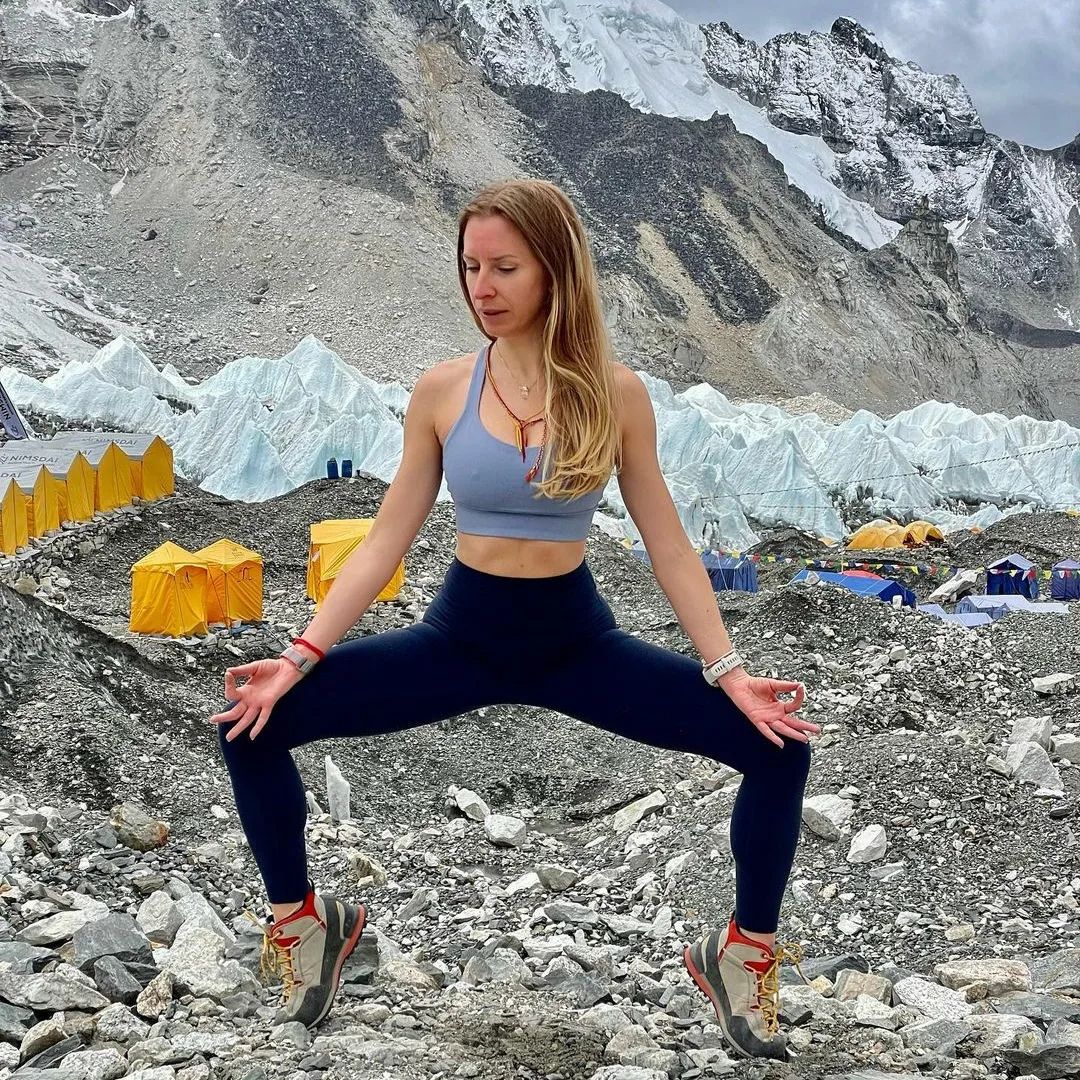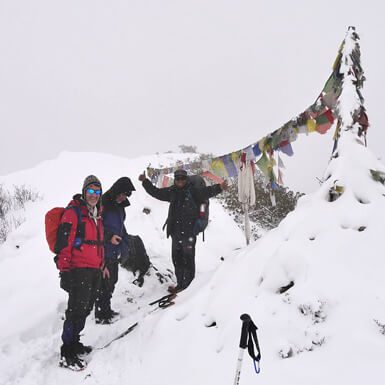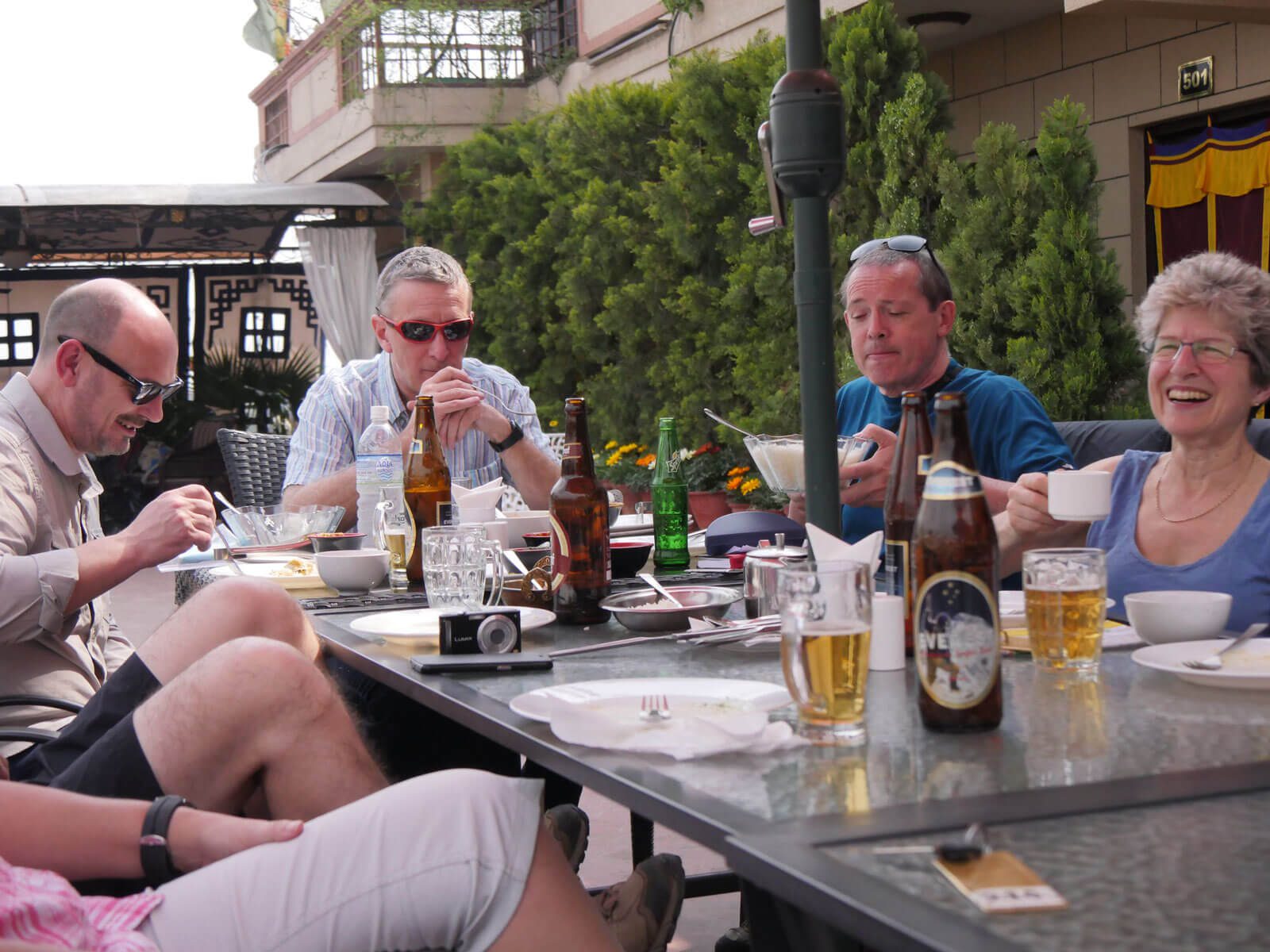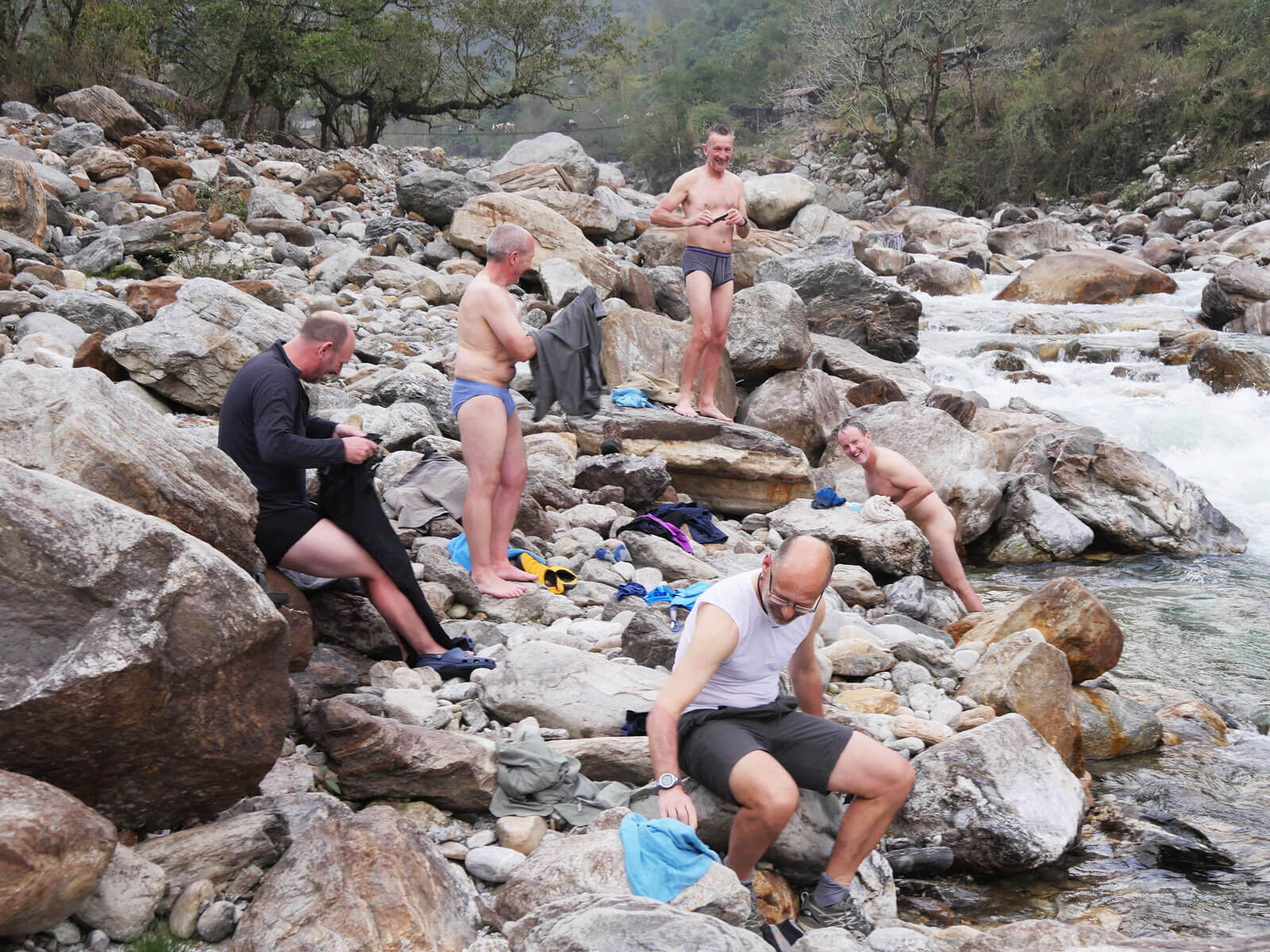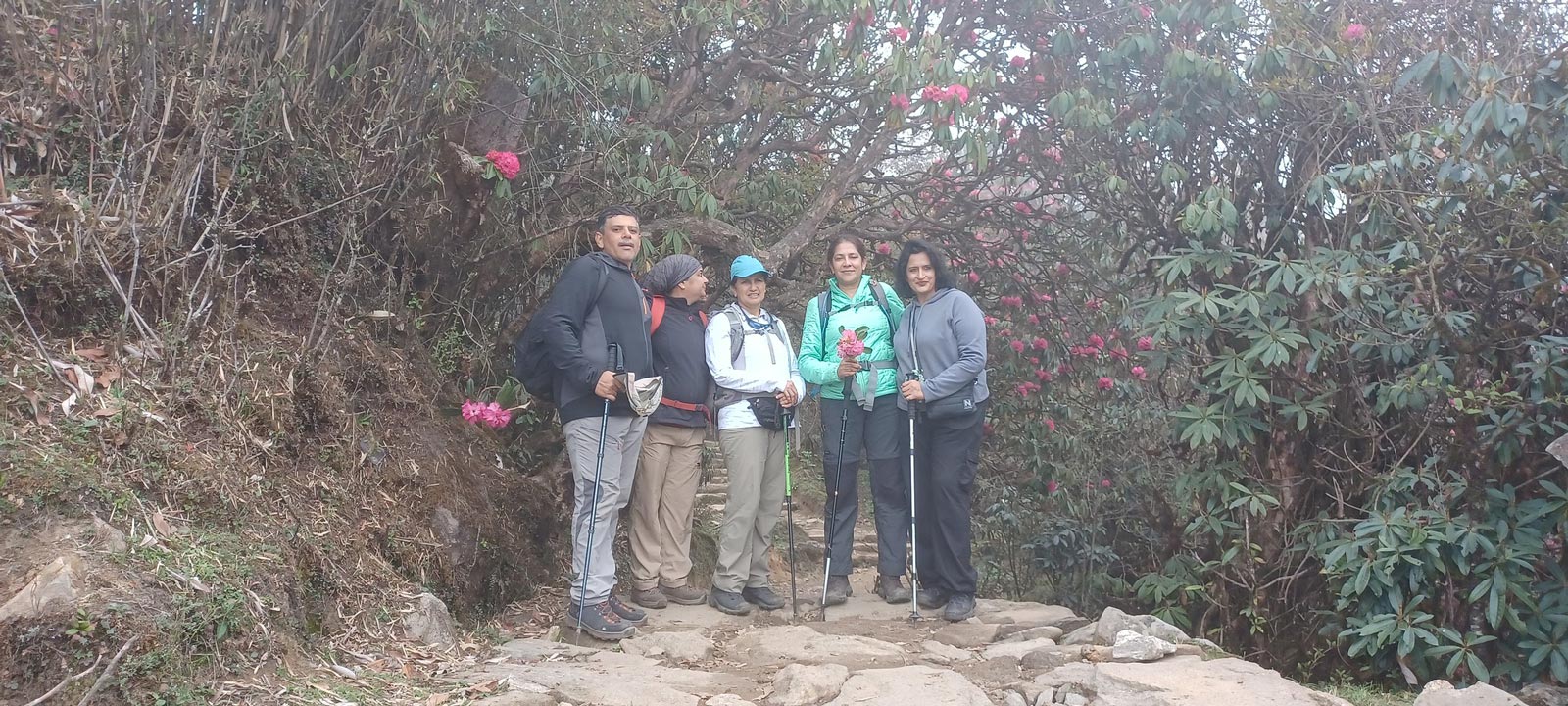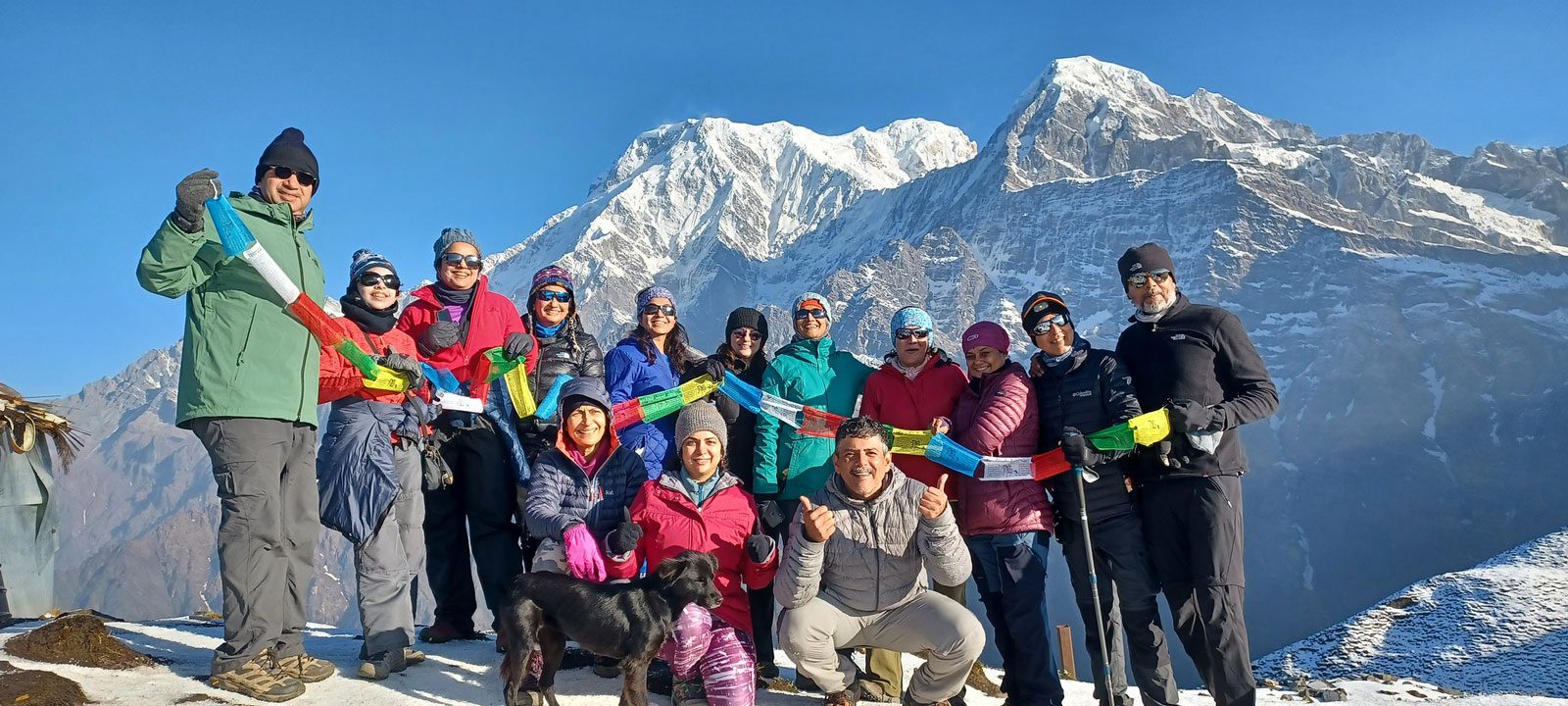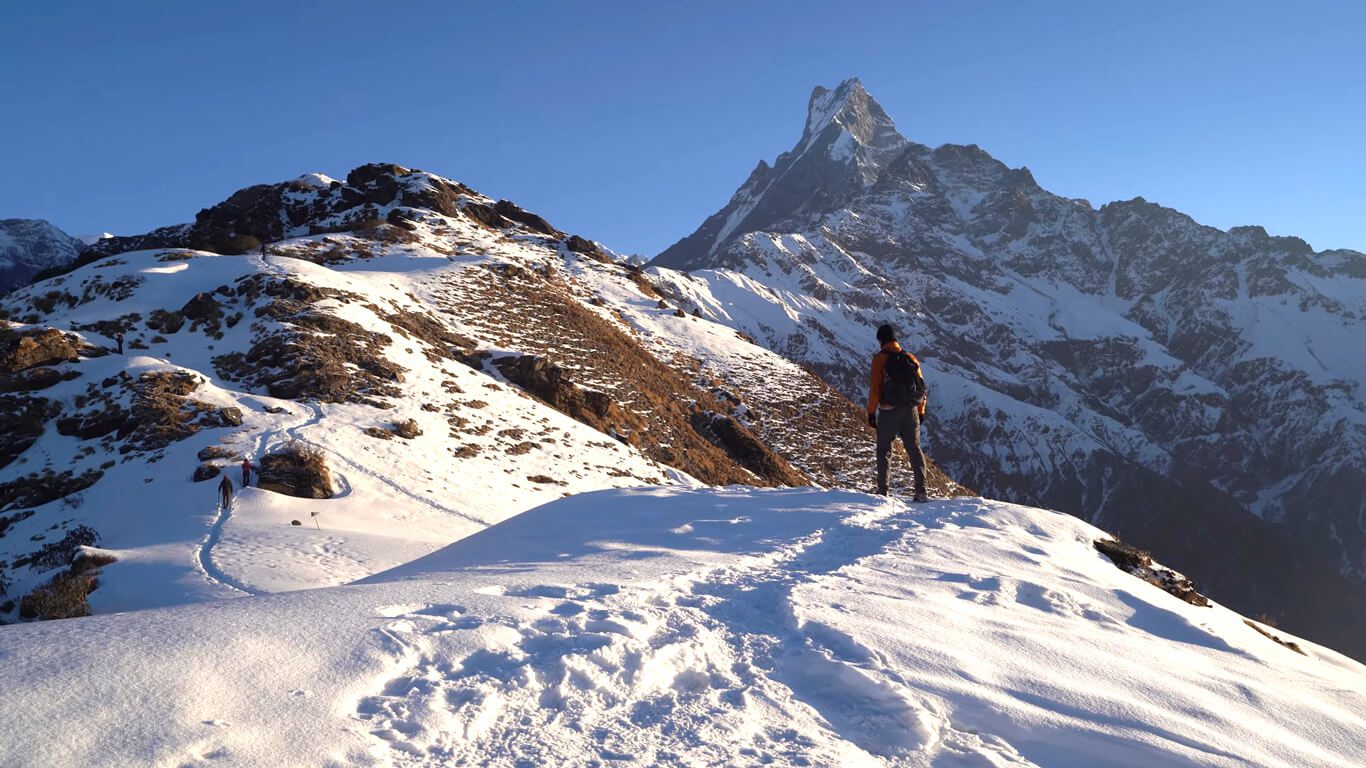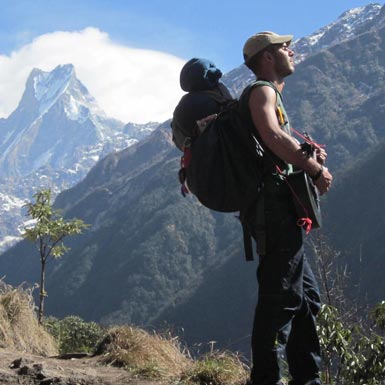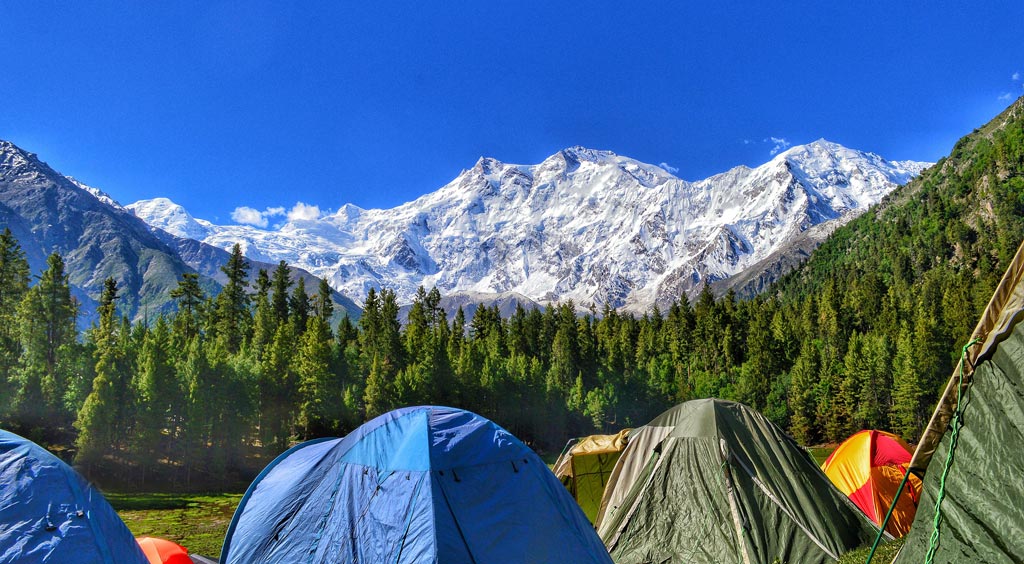What does the Manaslu Circuit Trek Package Include?
- During the Manaslu Circuit Trekking, lodging in one of Kathmandu’s top three-star hotels and receiving the best teahouse and lodge services along with the trekking.
- Private car service for airport Pickup and drop-off
- Stunning sightseeing of the Kathmandu Valley with a private car
- All entrance fees for sightseeing
- She trained porters and guides who could manage circumstances and have outstanding communication skills.
- It encompasses all of Manaslu Region’s licenses, covering MCAP, ACAP, and TIMS.
- Includes a first aid kit and any necessary prescriptions for traveling
- All Applicable taxes
What Manaslu Circuit Trek Package Excludes?
- It doesn’t Include Meals like dinner and lunch in Kathmandu before an early arrival, as well as days spent remaining over the allotted number of days.
- Excludes the cost of an international flight and the Nepal visa charge
- Insurance related to travel and rescue, which must be handled independently
- Miscellaneous Expenses (Hot shower, bar, extra foods, and other items which are not included in the trekking package)
- Tips for Guides and Porters
Manaslu Circuit Trek Distance
The 15-day Manaslu Circuit Trekking will reveal the western Himalayas’ secret landscape, with waterfalls, animals, and plant life. The Manaslu Circuit is a somewhat long trek covering a distance of around 117 km, but it won’t be an issue if you have 15 days to complete it. Similar to how you almost certainly have to trek for 6 – 7 hours each day—the standard amount of time for trekking in Nepal. Additionally, the Manaslu Circuit Trekking begins in the Gorkha area at Arughat and leads to Besisahar and several north hilly and Himalayan settlements. Solti Khola is where the Manaslu Circuit Trekking will begin.
Similarly, the 23 KM trek from Soti Khola to Macha Khola would take 6 to 7 hours. It will take around 6 hours from Maccha Khola to go the 23 km distance while passing through Jagat communities. Furthermore, this helps to focus the trial. Similarly, after hiking upwards for approximately 5 hours from Jagat, you would go 21 kilometers to reach Deng. The distance connecting Deng and Namrung is also a little shorter, taking 5 to 6 hours to trek and covering an average of 19.2 km. The next round of your expedition will involve an 11-kilometer trek from Namrung to Lho, which will take 4 to 5 hours to accomplish.
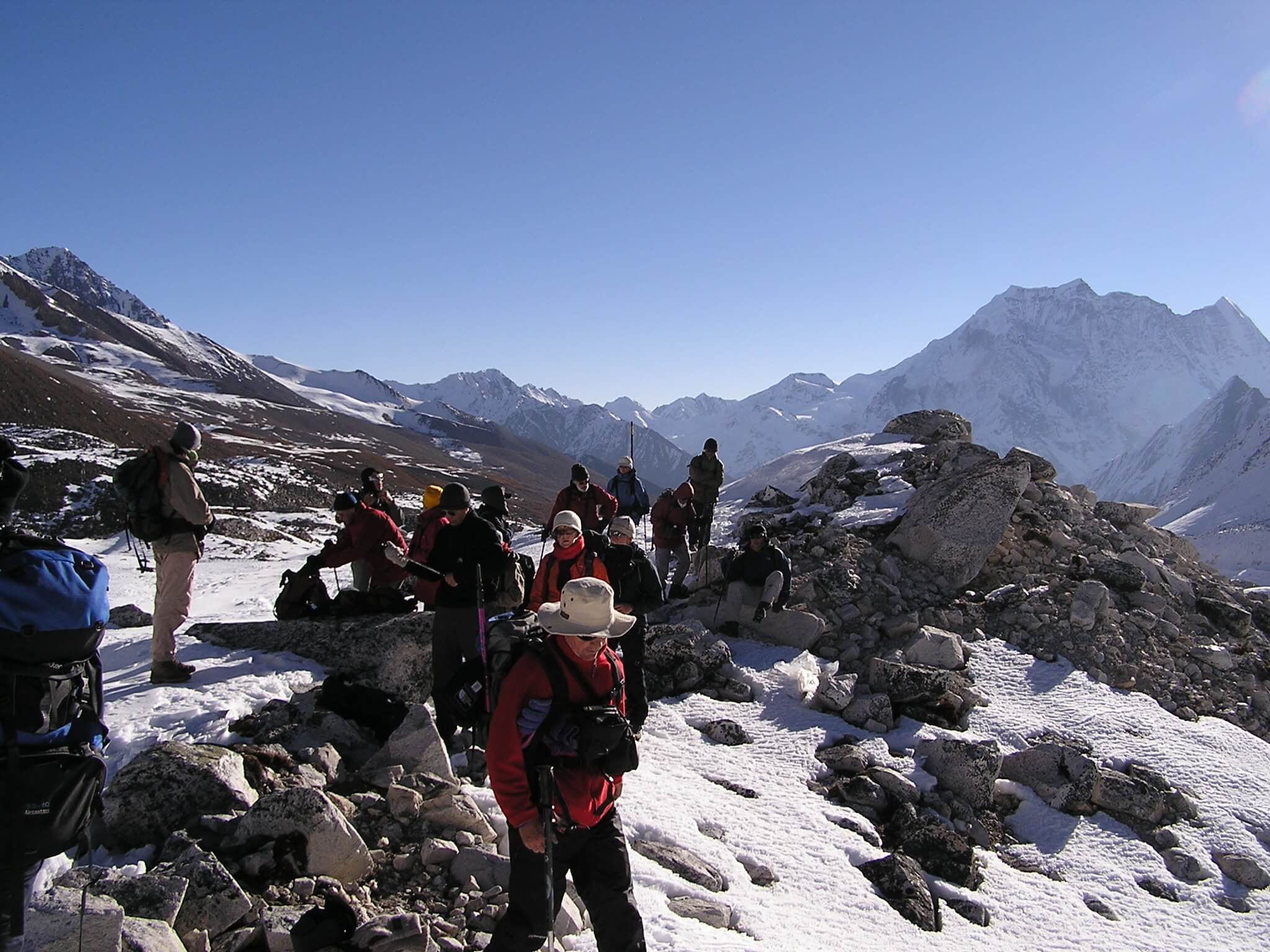
The distance between Lho and Samagaun is 18 kilometers, and the trek will take around 2 hours today. You will also see other monasteries in and around the town of Shyala. Similarly, if you continue uphill from Samagaun, it would take 6 to 7 hours to reach Samdo. These two towns are separated by around 17 kilometers. Unlike prior trials, this one won’t be as tricky or steady to traverse through. Similarly, it will take 3 to 4 hours to trek the 12.50 kilometers from Samdo to Dharmasala. Similarly, it will take 6 to 7 hours to trek the 24 kilometers between Larkya Phedi and Bhimtang.
Likewise, you will be trekking from Bhimtang to Tilije the next day, a distance of around 26 kilometers, taking close to 2 hours to accomplish. Additionally, it takes three hours to trek 8 km from Tilije to Dharapani, and you may take a local bus to drop you off right in the Beshi Sahar. The next day, you will travel 186 kilometers from Besisahar to Kathmandu by bus, which will take around 6 hours to complete. Similar to how the Manaslu Circuit Trek adds 50 to 60 kilometers to the Tsum Valley Trek, it will likely take 2 to 3 days to accomplish.
Manaslu Circuit Trek Guide
The guides and porters accompanying you on the Manaslu Circuit Trekking are crucial since they will serve as your support system from the start of the trek. Your guides will help you with all facets of your trek. They can deal with events and problems in the best way feasible. These guides will point you toward the most effective trekking path using their thorough knowledge of all routes. These instructions also include professional communication abilities. Additionally, the guides will provide you with additional information on the mountains, villages, species, flora, weather, and sceneries you pass along the route.
Raising the trial to the heavy packs above the Samdo and Bhimtang isn’t easy. You might also require porters to carry your gear and luggage while trekking. These guides and porters will be helpful and courteous during the Manaslu Circuit Trekking. A guide will cost between $25 and $35 per day. Hiring a porter for the Manaslu Circuit Trekking will cost you $15 to $20 daily.
Manaslu Circuit Trek – 12 days Itinerary
Day 1: Arrival in Kathmandu (1400m)
On your arrival in Kathmandu, we will pick you up from the airport in a private vehicle and take you to one of the city’s top three-star hotels.
Day 2: Drive from Kathmandu to Pokhara/Beshi Sahar to Soti Khola (710m)
We will take 6 hours from Kathmandu to go to Pokhara via local bus. Similarly, we’ll move to Beshi Sahar and then to Soti Khola. We’ll spend the night here.
Day 3: Trek from Soti Khola to Maccha Khola (900m)
This is where the trek’s beginning will be. After a lovely breakfast, we’ll be proceeding to Maccha Khola. One has beautiful sentiments on this challenge, passing through gorgeous, lush oak trees and Labubesi. The stunning communities of Maccha Khola are reached by crossing the enormous Nauli Khola suspension bridge. We’re going to spend the night here.
Day 4: Maccha Khola to Jagat (1410m)
After a delicious breakfast, we will trek to Jagat. After fording many rivers, including the Budhi Gandaki, we will eventually arrive at a settlement with a thick forest. We will reach Jagat after 6 to 7 hours of trekking and progressing farther from Dobhan. We’ll spend the night at Jagat.
Day 5: Trek from Jagat to Deng (1800m)
After a 6—to 7-hour trek, we will pass several Philim rural monasteries and arrive at Deng, one of the most picturesque settlements. We’ll stay the night here today.
Day 6: Trek from Deng to Namrung to Samagaun (2630m – 3530m)
After a lovely breakfast at one of the teahouses, we will go to Namrung. When we cross the Hinanag River and pass the Ribhung Monastery, we arrive at Lho. Similarly, following a break for lunch at a teahouse, we’ll head to Shayala Settlement. After a 6 to 7-hour trek, we will arrive in Namrung. In the same way, heading directly from the north, we will make our way to Samagaun, where we will spend the night. We will also explore pungent gumba on this day.
Day 7: Trek from Samagaun to Samdo (3860m)
We will arrive at Samdo after 4 to 5 hours of trekking, with some minor uphill and downhill sections. Crossing the Budhi Gandaki and other glacier basins will feel incredible. We’ll spend the night there tonight, and Samdo Peak will be visible.
Day 8: Trek from Samdo to Dharmasala (4460m)
After a lovely breakfast at the teahouse, we will trek to Dharmasala. In addition to the picturesque Larkya Bazaar village, we will pass several glacier iceberg emergence points. Likewise, we will arrive in Dharmasala by traveling the route across the Larkya glacier. We’ll spend the night here as well.
Day 9: Trek to Bhimtang (3720m)
After a five-hour descent, we will arrive in Bhimtang. The route to Bhimtang also includes several high passes. The conservation areas will also be included in your route. We’ll spend the night here after we get to Bhimtang.
Day 10: Trek from Bhimtang to Dharapani (1860m)
On this day, after a lovely breakfast in the teahouse, we will climb towards Dharapani, continuing downward. Within 5 to 6 hours of trekking, we will reach Dharapani after traversing deep oak and pine forests and admiring stunning rhododendron waves.
Day 11: Dharapani to Besisahar/pokhara to Kathmandu
On this particular day, we’ll take a local bus from Dharapani via Besisahar to Pokhara. From either Besisahar or Pokhara, a local bus will run directly to Kathmandu. The same goes for our trip from Pokhara to Kathmandu, where we will arrive after a 6—to 7-hour bus ride and spend the night bidding farewell.
Day 12: Departure
Your departure will take place today. We will drive you to the airport in our vehicle three hours before your flight. If you have the necessary papers and airline tickets, you are ready to head to your home or your next destination.
Manaslu Circuit and Tsum Valley Trekking
One of Nepal’s most adventurous and distinctive treks is the Manaslu Circuit Trekking with Tsum Valley. It combines the trek through the Tsum Valley and the Manaslu Circuit. Just below Manaslu, you will be trekking through several glaciers and passes. You will find a worth full of adventure and thrill with the Manaslu region’s unique local customs and culture and the beautifully proportioned landscape. The lovely mountain town of Besisahar serves as the starting point for the trek. You will ascend to Jagat by progressively and steadily following the Budhi Gandaki. As the restriction area encompasses these sections, you must provide your permit.
Similarly, after trekking through a thick forest of towering, gnarled oak trees and spruce trees beyond the skies, we will eventually arrive at the Chokhangparo from Chumling. We’ll stop for breaks and lunches at teahouses on the route to replenish our energies. From the laps of Manaslu and Ganesh Himal, narrow challenges emerge. Similar to how they will welcome you, your lovely monasteries will allow you to experience the old traditions of the Tibetan Nepalese people. Similarly, Samagaun will serve as your stopping place for the trek, from which you may go to the Pungent Gumba trial, which serves as the Samagaun exploration portion. In addition, you will see several monasteries from the Pungent Gumba in Manaslu’s shadow.
The same goes for trekking to Samdo following Samagaun, where you will spend the night. You’ll then ascend to Dharmasala and spend the night here. Similarly, from Dharmasala, you will be rising to go and chance. Given that these difficult-to-trek parts of the environment are below the town, Gho and Chance reflect the Tsum Valley. You’ll get more satisfaction from the great Himalayan ambiance in the lovely, clean village. After passing via Larkya Pass, you will gradually descend to Bhimtang, where you will find excellently equipped lodges and teahouses. This is where your adventure finishes, slowly descending to Dharapani through an oak grove and rhododendrons.
Manaslu and Annapurna Circuit Trek
Most trekkers nowadays prefer to trek the Manaslu and Annapurna Circuit. Today’s treks are remarkable, with incredible, distinctive routes and natural aspects. Along with many ethnic groups, Buddhism and Hinduism are also present in the culture and routes. The numerous towns you will pass through and the historic monasteries you will see also have this in common. You will experience the most authentic feeling of trekking in the mountains like Siringi Himal, Ganesh Himal, Manaslu, and Annapurna. After the descent of Bhimtang, the trail will merge with Annapurna Circuit. You may connect to the Annapurna Circuit by traversing various glaciers and waterfalls from Larkya Pass.
Manaslu Circuit Trek Cost
A 15-day Manaslu Circuit Trek with Peregrine Treks will cost about $1400. The Manaslu Circuit Trekking cost breakdown is provided below.
Travel insurance cost
Travel insurance is necessary. It will cost between $150 and USD 200 for 30 days.
Trekking Permits Cost
Annapurna Conservation Area Permit (ACAP) – USD 30 per person
Special Restricted Area Permit for Manaslu (SRAP)
- December to August – USD 75 per person
- November to September – $100 USD per person
Manaslu Conservation Area Permit (MCAP) – USD 30 per person
Trekker’s Information Management System (TIMS)- USD 20 Person
Guides and Porters Cost
The Manaslu Circuit trekking requires the crucial assistance of guides and porters. Porters charge from $15 to $25 per day, whereas guides often charge between $25 and $35 per day.
Transportation Cost
Local bus transportation will be less expensive than using a private vehicle. The local bus cost from Kathmandu to Besisahar is between $80 and $100. Similarly, it costs around $50 to get from Besisahar to Dharapani, which is affordable. Likewise, it costs between $250 and $300 to fly from Kathmandu to Pokhara.
Accommodations and Meals
Accommodation fees are included in the package. Upon your arrival, we will check you into a three-star hotel in Kathmandu. The trekking route will also have an eco-lodge system. In addition to the trekking package, one night’s lodging in the top lodges costs around $100 per day. Teahouse lodging costs around $20 and $35 per day. Meals, including breakfast, lunch, and supper, will be around $10 and $15 per day.
Miscellaneous Cost and Out Expenses
The need to purchase a bottle of water, which will cost you between $2 and $3, may arise. Similarly, you may as well spend about $100 on local handicrafts and an antique statue while trekking. Your total outlay for hot showers, Internet access, and SIM cards will be about $50. You may also bring additional food items, for which $100 is required.



